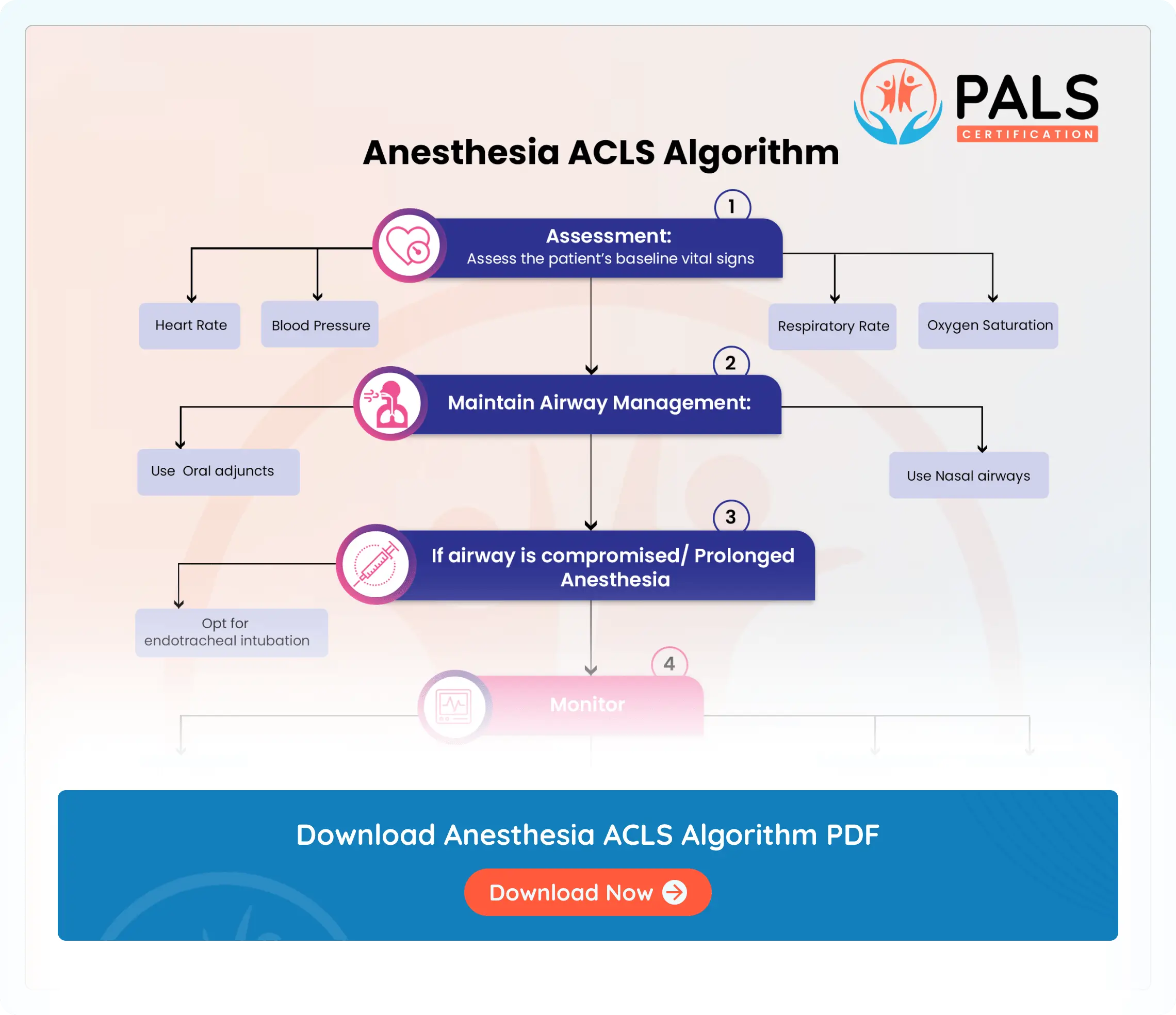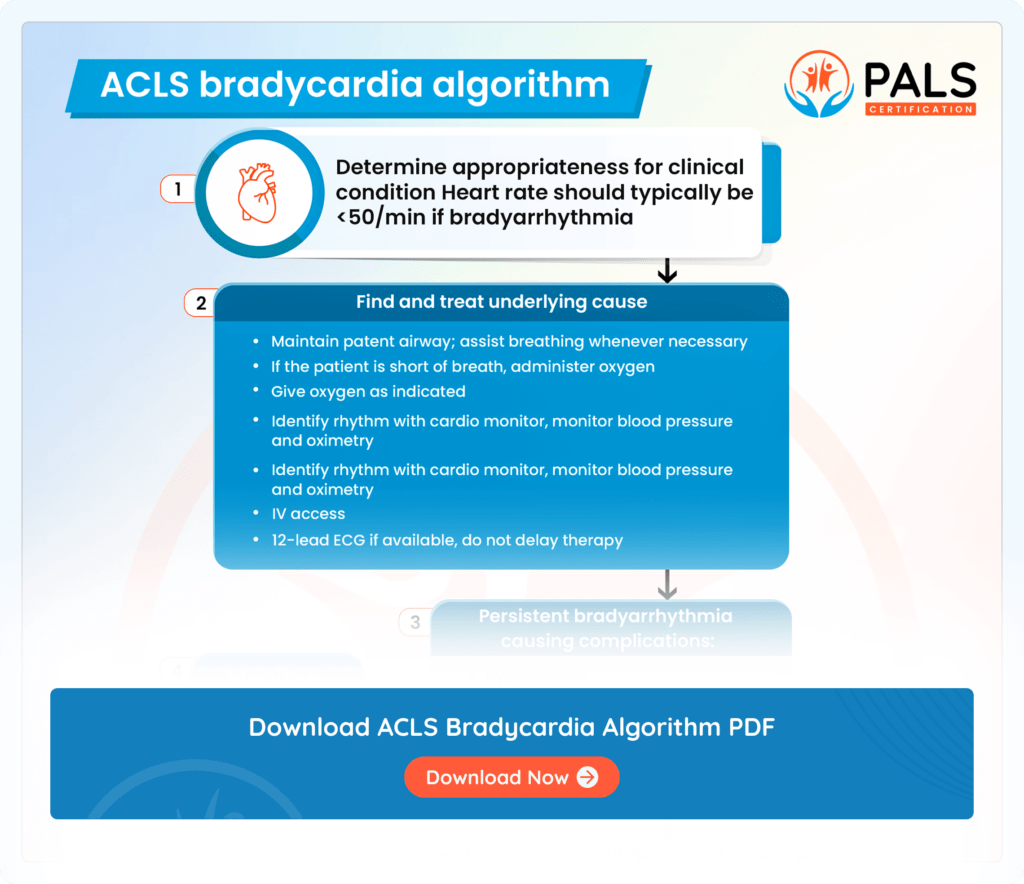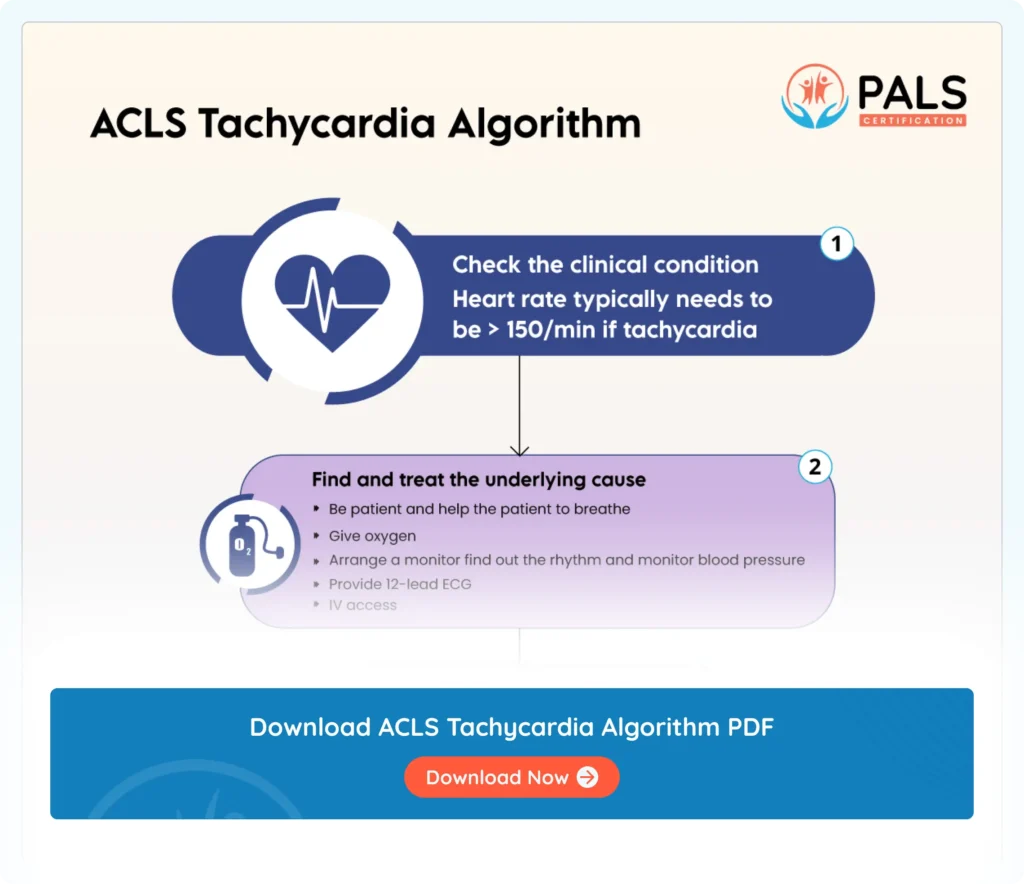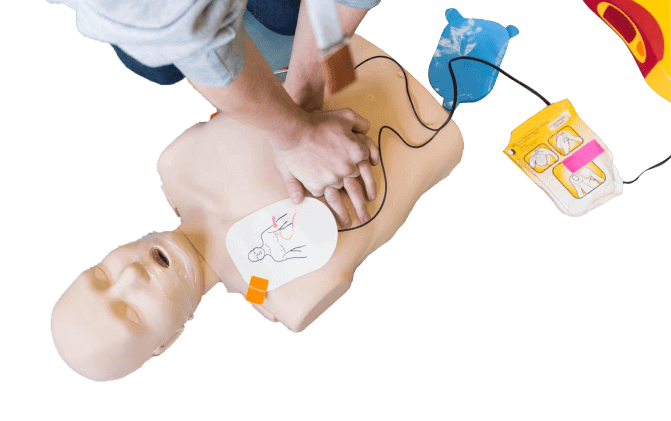- 4.0 - 8.0 CE Credit Hours
- For Pediatric Responders
- Includes Videos, Megacode Scenarios, Practice Tests & More
The ACLS Anesthesia Algorithm guides healthcare providers in managing pediatric patients undergoing anesthesia, emphasizing the importance of monitoring vital signs and responding promptly to any complications.
The Advanced Cardiovascular Life Support (ACLS) Anesthesia algorithm(1) is a critical and structural framework for healthcare workers. It plays a vital role in optimizing patient outcomes and identifying risks related to anesthesia administration in the pediatric population. This guideline helps healthcare professionals maintain the cardiovascular system of patients who have undergone surgical procedures. (2)
The flowchart explained below will help understand the chronology of the steps and importance of structural approach to postoperative emergencies.

Online PALS certification and recertification
- Compliant with ECC and OSHA guidelines
- Nationally accepted course
- Available anytime, anywhere
- Earn CE credit hours
$119

Step by step analysis of flowchart
- Assessment:
- Assess the patient’s baseline vital signs
- (Heart rate, blood pressure, respiratory rate, oxygen saturation)
- Maintain Airway Management:
- Ensure proper airway management
- Use adjuncts like Oral or Nasal airways
- If airway is compromised/ Prolonged Anesthesia
- Use advanced airway interventions (endotracheal intubation)
- Monitoring
- Respiratory depth, pattern and rate
- Utilize Capnography and Pulse Oximetry
- Use Electrocardiogram (ECG) to detect Dysrhythmias or Myocardial ischemia.
- Closely observe changes in heart rhythm
- Conduct ST segment morphology indicating Cardiac Compromise.
- Medication Administration
- For maintaining Blood Pressure (Vasopressors like Phenylephrine)
- For Arrhythmias (Amiodarone)
- Consider synchronized cardioversion
- For unstable arrhythmias(ventricular tachycardia or supraventricular tachycardia with hemodynamic compromise)
- Consistent monitoring required throughout the perioperative period.
Highlights of Anesthesia ACLS Algorithm
- Assessment: Begin with a thorough assessment of the child’s vital signs, level of consciousness, and overall clinical status.
- Airway Management: Ensure a patent airway and proper ventilation. Be prepared to intervene with advanced airway techniques if necessary.
- Cardiac Monitoring: Continuously monitor the child’s cardiac rhythm and vital signs, particularly focusing on any signs of dysrhythmias or myocardial ischemia.
- Medication Administration: Administer medications as needed to optimize cardiovascular function and manage any emergent arrhythmias or hemodynamic instability.
- Treatment of Emergencies: Be prepared to respond rapidly to any acute cardiovascular or respiratory emergencies that may arise during the perioperative period.
- Collaboration: Work closely with other members of the healthcare team, including anesthesia providers, to coordinate care and implement appropriate interventions.
- Continuous Reassessment: Continuously reassess the patient’s condition and response to treatment, adjusting the management plan as necessary based on changes in clinical status or the progression of the procedure.
Available Courses
PALS Certification and Recertification Online
ACLS Certification and Recertification Online
- 4.0 - 8.0 CE Credit Hours
- For Healthcare Professionals
- Includes Videos, Megacode Scenarios, Practice Tests & More
$119.00 $169.00
Get CertificateBLS Certification and Recertification Online
- 6.0 CE Credit Hours
- For Medical Fields
- Includes CPR & First Aid Bag-Mask Techniques
$36.95 $39.90
Get CertificateSources
- First Things First (assess for & treat the following): https://anesth.unboundmedicine.com/anesthesia/view/Pocket-ICU-Management/534041/all/ACLS_Algorithms
- Intraoperative advanced cardiac life support (ACLS): https://www.uptodate.com/contents/intraoperative-advanced-cardiac-life-support-acls
- Anesthesia advanced circulatory life support: https://www.ncbi.nlm.nih.gov/pmc/articles/PMC3345112/
- Algorithms for advanced cardiac life support: https://www.acls.net/aclsalg
- Anesthesiology-Centric ACLS https://www.gdimov.eu/GDimov/CPR/AACLS.pdf
- Perioperative Resuscitation and Life Support Certificate (PeRLS): https://www.asahq.org/education-and-career/educational-and-cme-offerings/perls/perls-faq
- ACLS: Special circumstances: https://www.openanesthesia.org/keywords/acls-special-circumstances/
- Intraoperative advanced cardiac life support (ACLS): https://medilib.ir/uptodate/show/118690
All ACLS Algorithms

ACLS Bradycardia Algorithm
An ACLS Bradycardia algorithm helps you learn the guiding interventions for emergency slow heart rates

ACLS Cardiac Arrest Algorithm
The ACLS cardiac arrest algorithm directs resuscitation efforts, outlining steps like patient assessment, CPR initiation, defibrillation if needed, medication administration, reversible cause evaluation, and advanced interventions.

ACLS Tachycardia algorithms
ACLS tachycardia algorithm helps manage elevated heart rates through systematic interventions for optimal patient outcomes


